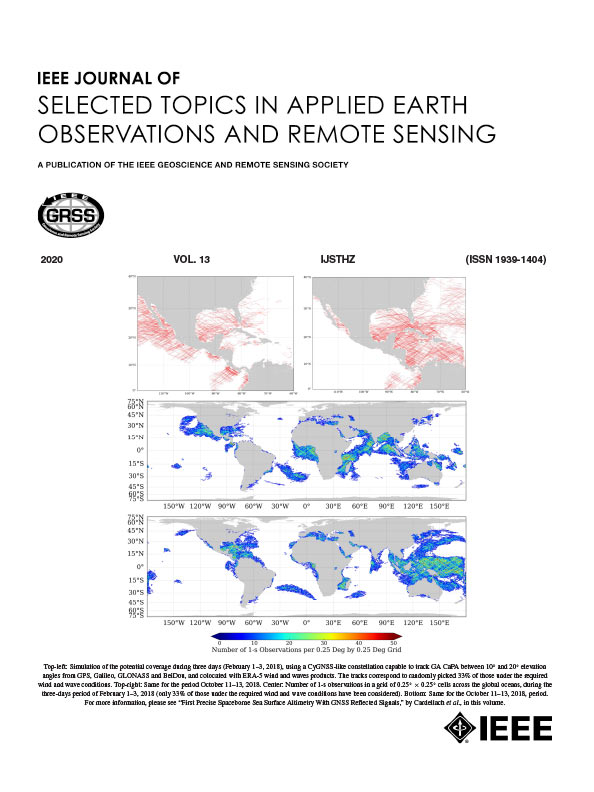SChanger: Change Detection From a Semantic Change and Spatial Consistency Perspective
IF 4.7
2区 地球科学
Q1 ENGINEERING, ELECTRICAL & ELECTRONIC
IEEE Journal of Selected Topics in Applied Earth Observations and Remote Sensing
Pub Date : 2025-03-28
DOI:10.1109/JSTARS.2025.3555849
引用次数: 0
Abstract
Change detection is a key task in Earth observation applications. Recently, deep learning methods have demonstrated strong performance and widespread application. However, change detection faces data scarcity due to the labor-intensive process of accurately aligning remote sensing images of the same area, which limits the performance of deep learning algorithms. To address the data scarcity issue, we develop a fine-tuning strategy called the semantic change network. We initially pretrain the model on single-temporal supervised tasks to acquire prior knowledge of instance feature extraction. The model then employs a shared-weight Siamese architecture and extended temporal fusion module to preserve this prior knowledge and is fine-tuned on change detection tasks. The learned semantics for identifying all instances is changed to focus on identifying only the changes. Meanwhile, we observe that the locations of changes between the two images are spatially identical, a concept we refer to as spatial consistency. We introduce this inductive bias through an attention map that is generated by large-kernel convolutions and applied to the features from both time points. This enhances the modeling of multiscale changes and helps capture underlying relationships in change detection semantics. We develop a binary change detection model utilizing these two strategies. The model is validated against state-of-the-art methods on six datasets, surpassing all benchmark methods and achieving F1 scores of 92.87%, 86.43%, 68.95%, 97.62%, 84.58%, and 93.20% on the LEVIR-CD, LEVIR-CD+, S2Looking, CDD, SYSU-CD, and WHU-CD datasets, respectively.从语义变化和空间一致性的角度看变化检测
变化检测是地球观测应用中的一项关键任务。最近,深度学习方法表现出了强大的性能和广泛的应用。然而,由于精确对齐同一区域的遥感图像需要耗费大量人力物力,因此变化检测面临着数据稀缺的问题,这限制了深度学习算法的性能。为解决数据稀缺问题,我们开发了一种名为语义变化网络的微调策略。我们首先在单时相监督任务上对模型进行预训练,以获取实例特征提取的先验知识。然后,模型采用共享权重连体结构和扩展时态融合模块来保留这些先验知识,并在变化检测任务中进行微调。识别所有实例的已学语义被改变为只专注于识别变化。同时,我们观察到两幅图像之间的变化位置在空间上是相同的,我们将这一概念称为空间一致性。我们通过大核卷积生成的注意力图引入这种归纳偏差,并将其应用于两个时间点的特征。这增强了对多尺度变化的建模,并有助于捕捉变化检测语义中的潜在关系。我们利用这两种策略开发了一种二元变化检测模型。在 LEVIR-CD、LEVIR-CD+、S2Looking、CDD、SYSU-CD 和 WHU-CD 数据集上,该模型的 F1 分数分别为 92.87%、86.43%、68.95%、97.62%、84.58% 和 93.20%,超过了所有基准方法。
本文章由计算机程序翻译,如有差异,请以英文原文为准。
求助全文
约1分钟内获得全文
求助全文
来源期刊
CiteScore
9.30
自引率
10.90%
发文量
563
审稿时长
4.7 months
期刊介绍:
The IEEE Journal of Selected Topics in Applied Earth Observations and Remote Sensing addresses the growing field of applications in Earth observations and remote sensing, and also provides a venue for the rapidly expanding special issues that are being sponsored by the IEEE Geosciences and Remote Sensing Society. The journal draws upon the experience of the highly successful “IEEE Transactions on Geoscience and Remote Sensing” and provide a complementary medium for the wide range of topics in applied earth observations. The ‘Applications’ areas encompasses the societal benefit areas of the Global Earth Observations Systems of Systems (GEOSS) program. Through deliberations over two years, ministers from 50 countries agreed to identify nine areas where Earth observation could positively impact the quality of life and health of their respective countries. Some of these are areas not traditionally addressed in the IEEE context. These include biodiversity, health and climate. Yet it is the skill sets of IEEE members, in areas such as observations, communications, computers, signal processing, standards and ocean engineering, that form the technical underpinnings of GEOSS. Thus, the Journal attracts a broad range of interests that serves both present members in new ways and expands the IEEE visibility into new areas.

 求助内容:
求助内容: 应助结果提醒方式:
应助结果提醒方式:


